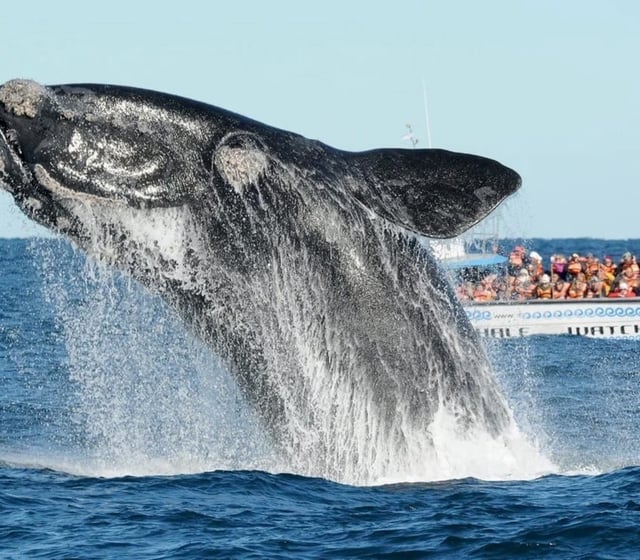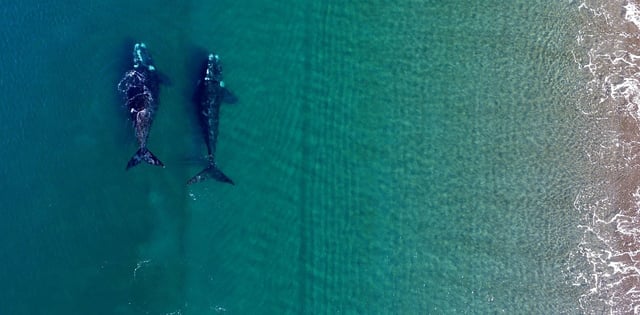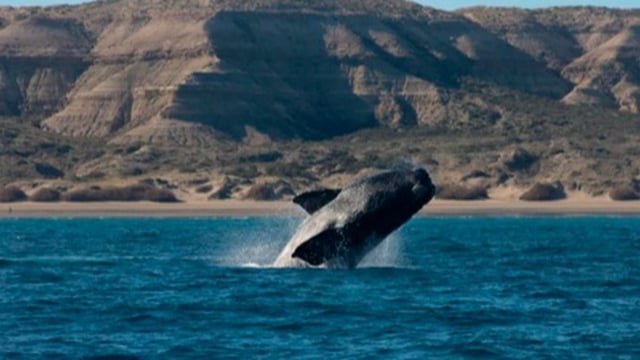Overview
- Aerial counts confirmed 2,110 whales in the 2025 census, including 82 calves, the highest total recorded for the site.
- Researchers attribute the milestone to decades of recovery since the 1970s protections, with growth rapid in the 2000s and slower yet steady in the 2010s.
- Expanding presence now includes sightings in areas such as Necochea, Mar del Plata and the coast of Uruguay, reflecting a broader regional range.
- The whale‑watching season runs May to December with a peak in August–September, and local operators finance annual surveys used to plan tours.
- Specialists warn of persistent risks from vessel strikes, underwater noise, entanglement in fishing gear and climate impacts on feeding grounds.


